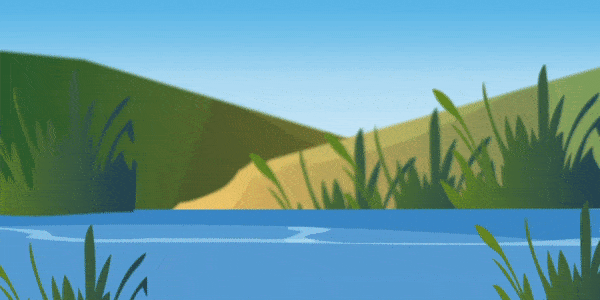
Have you ever noticed how tiny little ducklings paddle in a row behind their mother? They never try to break the order or their momentum. Do you know why? Is it to keep safe and not get lost? Well, safety is surely the first response that comes to the mind given the mysterious behavior of the ducklings. But there is also a science behind tiny duck siblings swimming in a row behind their mother. Let’s first understand how ducks swim in water.
If you live near a water body of any size or shape, chances are you may have seen ducks and their babies walking on land and swimming in water with ease. How do they do both? The obvious answer is: ducks use their feet to waddle on land and float in water. Their webbed feet are uniquely designed to help them move through the water. Their feet can become wider and act as a paddler to provide more surface to push against the water. And because ducks don’t have any nerves or blood vessels in their feet, they can easily tolerate cold water and move fast and far.

The external anatomy of a Drake (male duck) | Source: animalcorner.org
Another unique feature is their waterproof feathers that help keep them dry and insulate from cold water. Like many birds, ducks have a special gland called a preen gland near their tails that secretes oil. Using their bills, ducks can distribute this oil while coating their feathers and providing a layer that keeps them slick in the water.
You might have noticed in cartoons how tiny little ducklings follow their mother in the water, wagging their tails and moving in a formation. The fact is ducklings unfailingly follow their mother and there is a strong reason why.
Scientists from the University of Strathclyde set out to answer this question and found the physics behind it – which they could apply in maritime shipping too. Apparently, ducklings follow their mothers in a row to reduce drag and move in the water. Drag is a force on an object that resists its motion through a fluid. A duck uses its webbed feet to cut through the water-resistance and create waves to move forward. Ducklings, on the other hand, have less energy to cut through the same water and move ahead. Therefore, they borrow their mother’s waves to move in the water. This way they also save up a lot of their energy.
When a duckling swims behind its mother, a destructive wave interference phenomenon occurs and the wave drag of the duckling turns positive, thus pushing the duckling forward. More interestingly, the wave-riding benefits of the mother can be sustained by the ducklings only if they follow one after another. That explains why ducklings follow their mother in a single-line formation and not in any random pattern.

A V-shaped pattern of wake line forms behind a duck when it crosses a calm water to move ahead.
To understand how ducklings use their mother’s wake in the water, naval architect Zhiming Yuan of the University of Strathclyde in Glasgow, Scotland, and his colleagues created computer simulations of a mother duck’s wake. A duck’s wake is the name given to the rippling waves created by a duck as it swims through water. They found that a duckling cruising in just the right spot behind their mother gets an assist from its mother.
When the ducklings are on their own, they kick up waves in their wakes, thus using up some energy that would otherwise send it surging ahead. That wave drag resists the ducklings’ motion. But they get a push when they swim behind their mother. And like good siblings, ducklings share their mother’s wake and pass it to the one behind them. And in that way, each duckling in the line passes along waves to those behind, so the whole brood gets a free ride.
Just like any other baby, ducklings need to be good kids to reap their mother’s benefits. If they fall out of the line or wander in different directions and dawdle, swimming can get really hard for them! Now that’s a fair punishment for those who disobey their mother, don’t you think?
Now you know why ducklings follow their mother in water. But do you know why they follow their mother on land? Take a guess in the comments below.
Read More:
1. How long until ducklings can fly?
Most ducklings develop feathers that are large enough for flight 50-60 days after hatching. This process is called fledging.
2. Will a mother duck take a duckling back?
Yes, not only will a mother duck take back her own duckling after being separated, but she will also usually accept ducklings that do not belong to her if they are roughly the same age.
3. Do male ducks help raise ducklings?
In most species of ducks, the male duck (called a drake) plays no role in raising the ducklings. There are excepetions though, like with mottled ducks and fulvous whistling ducks, where the drakes often care for the ducklings along with the mother duck.
Books are Tanaya Goswami’s first love and cheesecakes come a close second. Talking about movies, music, calligraphy, politics, and Elon Musk will get you listed under the friends’ section of her diary. Ever since moving on from her job as an English lecturer, she spends her time at BYJU’S crafting stories filled with emotion and sprinkled with sarcasm. Outside of work, she’s either learning something new (French, most recently!) or is curled up with a book and a cup of coffee. She firmly believes that discovering what you don’t know is the key to knowledge and is constantly working towards improving herself. Drop in a line at storyweavers@byjus.com if you liked her stories, have something nice to say, or if you have compelling ideas to share!